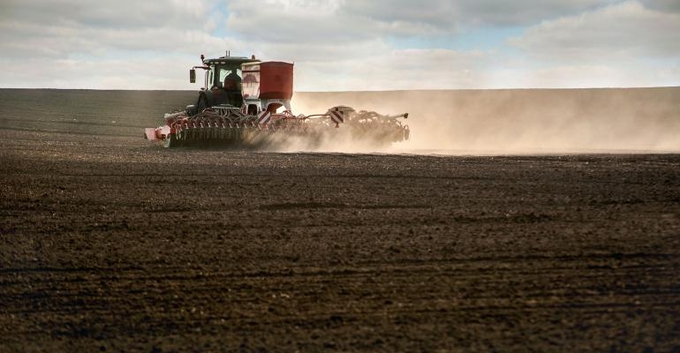June 21, 2025 | 00:59 GMT +7
June 21, 2025 | 00:59 GMT +7
Hotline: 0913.378.918
June 21, 2025 | 00:59 GMT +7
Hotline: 0913.378.918

Despite uncertainties, farms can position themselves to minimize fertilizer costs and retain farm profits — starting with updated soil tests, manure applications and planting cover crops to retain valuable nutrients
While fertilizer supplies are expected to be better next season, prices are not expected to fall dramatically. Local availability may also remain a concern as retailers continue working through supply chain disruptions.
Despite these types of uncertainties, farms can position themselves to minimize fertilizer costs and retain farm profits.
Know expected prices of key input purchases
Remember an important trend about prices. When commodity market prices are trending upward, input prices tend to follow quickly. A higher demand for a product often brings with it an equally higher demand for inputs needed to produce it.
However, when commodity prices decline, input prices are not as quick to follow. The lag time of fertilizer prices to follow markets affects all farms, regardless of whether you raise field crops, forages, fruits or vegetables.
Minimizing costs starts with understanding expected prices. A conversation with local retailers about current prices is needed before you can identify options to minimize costs. Once identified, you need to analyze which options are best for your farm.
Analyze best options for your farm
Knowing what options are available is one part of minimizing costs. The key is deciding which options will work best for your farm’s current situation:
Soil sampling. It’s critically important to reducing fertilizer costs. You need to know what you have to work with before considering any other decisions.
Yield goals. As you think about yield goals, consider how reasonable those goals are to meet. Are they based on historical trends? Unfounded wishes? It is always best to focus on a goal that is within your farm’s potential. Remember, you are basing your cost planning on what yield you want to achieve.
Pricing strategies. This may favor purchasing only a portion of your nutrient needs this fall. With a portion bought, you have secured access to some nutrients and a starting point to gauge future price changes.
Alternative nutrients. Consider manure or compost as an alternative to provide nutrients in this crop year as well as years to come. In addition to nutrients, they can also provide organic matter that creates healthier soil.
Options to reduce costs. Compare fertilizer prices to all other input needs and account for all options to reduce cost of production, which can include changes in planting intentions, renting out less productive acres, or adopting new practices to reduce fuel or chemical usage.
Nutrient retention through cover crops
Cover crops can be an effective way of preventing nutrient loss through erosion. When nutrients are applied to the soil surface, whether as manure or granular, nutrients can be lost during rainstorms, snowmelt and winter winds.
Actively growing roots hold soil in place, while aboveground plant growth shields soil from movement caused by wind and water.
Cover crops can contribute nitrogen to cash crops by converting atmospheric nitrogen to soil nitrogen and by scavenging and mining soil nutrients. Crops grown in fields after legumes can take up at least 30% to 60% of the N that the legume produced. You can learn more about cover crops in "Managing Cover Crops Profitably" published by the Sustainable Agriculture Research and Education program.
Cover crops can tighten nutrient cycling in your field by taking up nutrients that might otherwise leach out of the field. Non-legume cover crops are the best at nitrate conservation because of deep roots that form quickly after planted.
For much of Michigan, cereal rye is the best choice for capturing nutrients after a summer crop. Research has shown that rye planted in the fall by Oct. 1 can take up more than 70 pounds of nitrogen per acre. Nitrogen in rye can be returned to your next crop when rye is terminated in spring.
Finally, cover crops can contribute to phosphorus availability through housing beneficial mycorrhizae that are efficient at absorbing phosphorus from the soil and passing it on to their plant host. Keeping phosphorus in an organic form is the best way to maintain availability for your next crop.
Use available tools to aid decision-making
Finally, weigh through options using available decision tools from MSU Extension. The series of Fertilizer Cost Comparison Decision Tools are specifically designed to help you review nutrient management plans and their costs.
These tools do not replace soil testing or soil-based recommendations. Instead, they offer an opportunity to consider how to meet nutrient needs at the lowest possible cost. There are four versions of the decision tool available.
The Fertilizer Cost Comparison Decision Tools can be accessed through the MSU Extension’s Farm Management website on the Decision Tools subpage. For more information or feedback on future improvements to these decision tools, contact Jon LaPorte at laportej@msu.edu.
(Farmprogress)

(VAN) Poultry production in Poland, which has only started recovering from devastating bird flu outbreaks earlier this year, has been hit by a series of outbreaks of Newcastle disease, with the veterinary situation deteriorating rapidly.

(VAN) Extensive licensing requirements raise concerns about intellectual property theft.

(VAN) As of Friday, a salmonella outbreak linked to a California egg producer had sickened at least 79 people. Of the infected people, 21 hospitalizations were reported, U.S. health officials said.

(VAN) With the war ongoing, many Ukrainian farmers and rural farming families face limited access to their land due to mines and lack the financial resources to purchase needed agricultural inputs.

(VAN) Vikas Rambal has quietly built a $5 billion business empire in manufacturing, property and solar, and catapulted onto the Rich List.

(VAN) Available cropland now at less than five percent, according to latest geospatial assessment from FAO and UNOSAT.

(VAN) Alt Carbon has raised $12 million in a seed round as it plans to scale its carbon dioxide removal work in the South Asian nation.